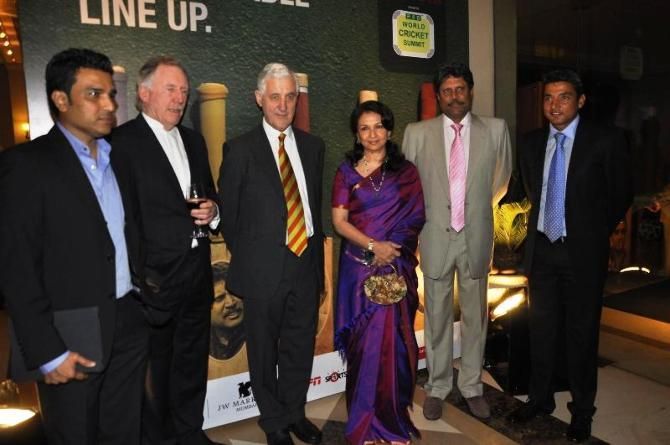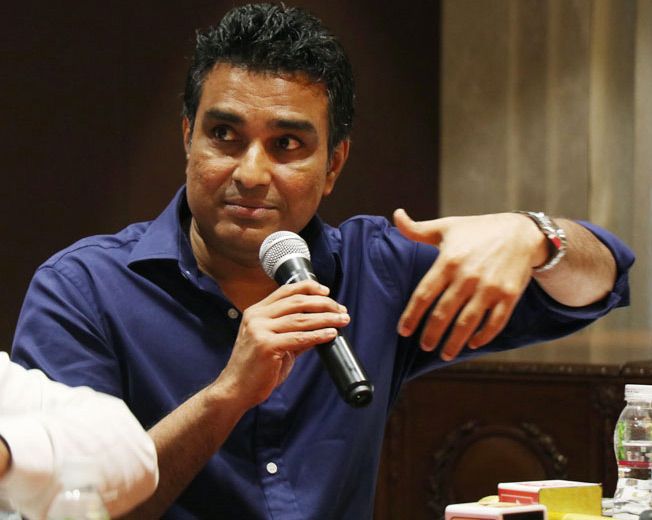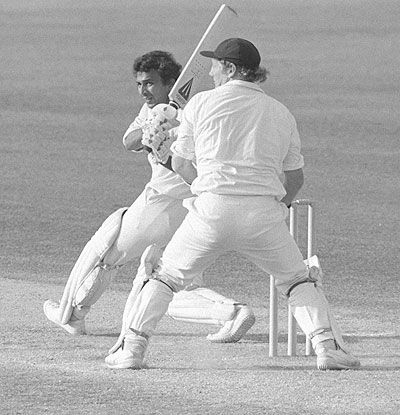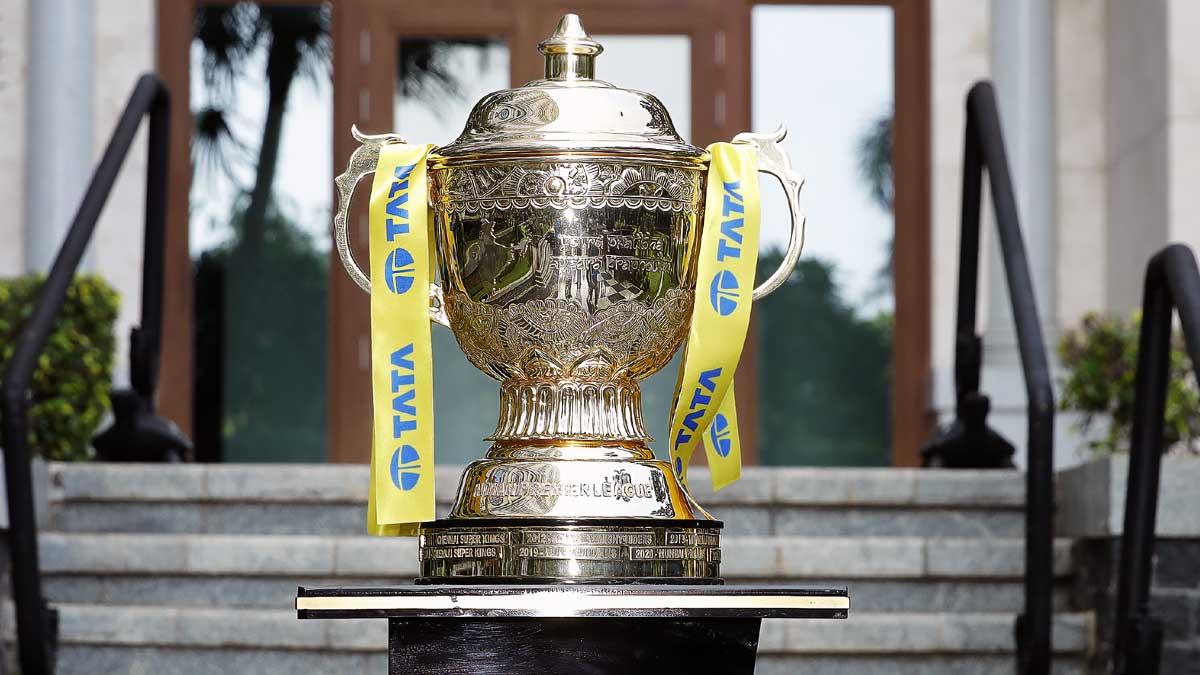'When I entered the Indian team's dressing room, I discovered that there was a divide in the team, like a wall in between two groups of players, there were two teams within one.'
'It was all about individual glory and if the team won in the process great!'
'My entire Test career was about me wishing that my Indian team was more like the Pakistan team.'

Sanjay Manjrekar played with great distinction for Mumbai and India in the 1990s, but it is clear he is unhappy that he played in the particular era of Indian cricket in which he did.
The son of the legendary Vijay Manjrekar, you could say the right-hander never quite fulfilled his potential at the highest level, scoring 2,043 runs in 37 Tests at an average of 37 as compared to his first class average of 55 in 147 games.
But like every all Mumbai cricketers, for Manjrekar, it was always about doing well at the highest level, not the Ranji level, he states.
Manjrekar is full of praise for Sourav Ganguly's leadership skills which he says brought India out of the dark period of match-fixing in the late 1990s and steered the team in a new direction.
'Post 2000 in the leadership of Ganguly and a foreign coach, a much brighter phase of Indian cricket began, India played the way I had wished throughout my playing career,' Manjrekar notes in the ninth Dilip Sardesai Lecture which he delivered at the Cricket Club of India in Mumbai, October 1.
Manjrekar also points out that World Cup 2011 winning captain Mahendra Singh Dhoni's influence on Indian cricket is immense.
'Dhoni brought calmness into Indian cricket, under Dhoni India started winning tight games, and critically started chasing better with the captain himself leading by example,' Manjrekar states in the lecture, which we are honoured to present here, in text and video form, in two parts.
Indian cricketers -- past and present -- are known to measure their words carefully. Not Sanjay Manjrekar. He speaks with a refreshing frankness, revealing the many chinks in Indian and indeed cricket's mighty armour.
A must read for every fan of cricket.
MY DAYS WITH INDIAN CRICKET
My cricket journey began in the late 1970s, at the age of 12.
I soon realised how lucky I was to be growing up and playing cricket in Mumbai.
For a young 12-year-old with dreams in his eyes of playing for India, the path was well laid in Mumbai, you represented your school and your very first steps into serious cricket were to play in the Giles and the Harris shield.
By the way, it's only many years later that I realised it was actually 'Giles' not Giles shield. Remember Ashley Giles?
During our time, there was tremendous motivation for school cricketers like me, to get a 100 or five-wicket haul for there would be a headline in the sports pages of the newspaper next day saying 'SANJAY SHINES' or in case of a bowler 'Khandwala deadly'.
Media platforms were few, so these headlines used to get a lot of attention and boy what a high that was!
Calls from your friends and family would come flooding in congratulating you on the effort. You felt like a star!
Now did a 12-year-old kid need any more inducement to keep playing the game, keep chasing his dream? No Sir!
With so many media platforms now, I am not sure a school cricketer's exploits get that much attention, unless of course you get a 500, something like Prithvi Shaw did.
After school cricket there was under-15, under-19 then under-22, the important next steps to take you closer to your dream.

This system, an age old one is what really produces talent of quality rather than 'academies' that are mushrooming all over the place, we used to call it 'nets' then, now they are called academies.
Again growing up in Mumbai was a blessing because there were all these marvellous people like Dilip Sardesai ex-Test stalwarts around, even on the maidens, at matches, at selection trials to boost your confidence and fuel your ambitions further.
I remember at one stage, Mr Sardesai being unhappy with me getting out in my 30s and not getting 100s, so my good friend Subhash took it upon himself to remind me of that every time I got out in the 30s and 40s, he (Mr Sardesai) would say 'I am not the believe in the 30s and 40s I am the believe in the 100.'
They were all these great guys willing you to do better, it was lovely. So, you got the right advice at the right time from the right people, it was all about what you needed to do to succeed at the highest level.
For Mumbaiites it was always about doing well at the highest level, not the Ranji level, a small town boy would not have these advantages that we had.
At a very impressionable age a wide eyed young cricketer would get a chance to share a dressing room with current superstars of Indian cricket.

Can you imagine how I must have felt when my idol Sunil Gavaskar was in the same dressing room as me while playing for Dadar Union? I was just 15.
I watched his every move during the day, my eyes were glued onto him as he went about his business, he must have found me quite creepy had he noticed.
Anyway, the next big step was Ranji cricket and again the wonderful seniors like Sandeep Patil came to the fore to guide you during an actual cricket match, the tips that you receive while you are on the field from another senior are priceless.
Wasim (Akram) and Waqar (Younis) got a heavy dose of this from well, the current PM of Pakistan (Imran Khan). It was one important reason for their eventual greatness, this is their view not mine.
Then the 12 year old's dream finally came to fruition, I was playing for India. This was late 80s post the Gavaskar era.
It remains my regret that this wasn't such a happy chapter in my cricket life. Not so much because of how my own career turned out, but because of the climate within the team at the time.
When I entered the Indian team's dressing room, I discovered that there was a divide in the team, like a wall in between two groups of players, there were two teams within one.
Thankfully by the end of my India career these lines were blurred,the wall came down eventually and with it also came an improvement of Team India's performance. Team India, I am using the modern terminology to keep up with the times.
During my time in the Indian team, it was still very much an individual sport, where a batsman if he got a 100 in the first Test of an overseas series, felt like his job for the series was done.
One hundred or a five-wicket haul in Australia, or England or the West Indies was a big thing.
It would suffice a player for the entire series, ambitions then were low, and they were even lower for the team, especially when abroad.
It was all about individual glory and if the team won in the process great!
Winning was incidental, while every player went about their own business.
The Indian players were still stars and big brands back home even if the team lost, so there was real motivation to care only about your own performance, be a little selfish, so to say.
It was also a time when pace and bounce was a real issue in Indian cricket.
When the opposition had four fast bowlers, it was heartbreaking to see players avoiding such challenges with cunning maneouvres. When the West Indies came to town long term injuries surfaced amongst the players.
This was the 1990s, where in the same era there was Pakistan our neighbouring team led by Imran Khan that set the bar really high.
My entire Test career was about me wishing that my Indian team was more like the Pakistan team.
The Pakistan team was strong then, when a home series against New Zealand was announced. Imran, their captain made his own announcement that this series was a waste of time.
Pakistan should be touring West indies and taking on tougher challenges, than playing against an ordinary opposition at home said Imran. He really thought his team could beat the West Indies and wanted that opportunity.
Here was a team's captain keen to play against West Indies, while in India we were finding ways to avoid playing them.
This was, of course, the Pakistan of old, the new Pakistan is a bit like old India and I am talking purely cricket here.
To make matters worse, my last years as India cricketer were spent in the dark cloud of match fixing, I saw my fellow players get bans and after that there was an understandable nagging suspicion about Indian cricket and the integrity of the Indian team.
Part 2: How Dada and Dhoni changed Indian cricket forever
Video: Hitesh Harisinghani/Rediff.com













 © 2025
© 2025